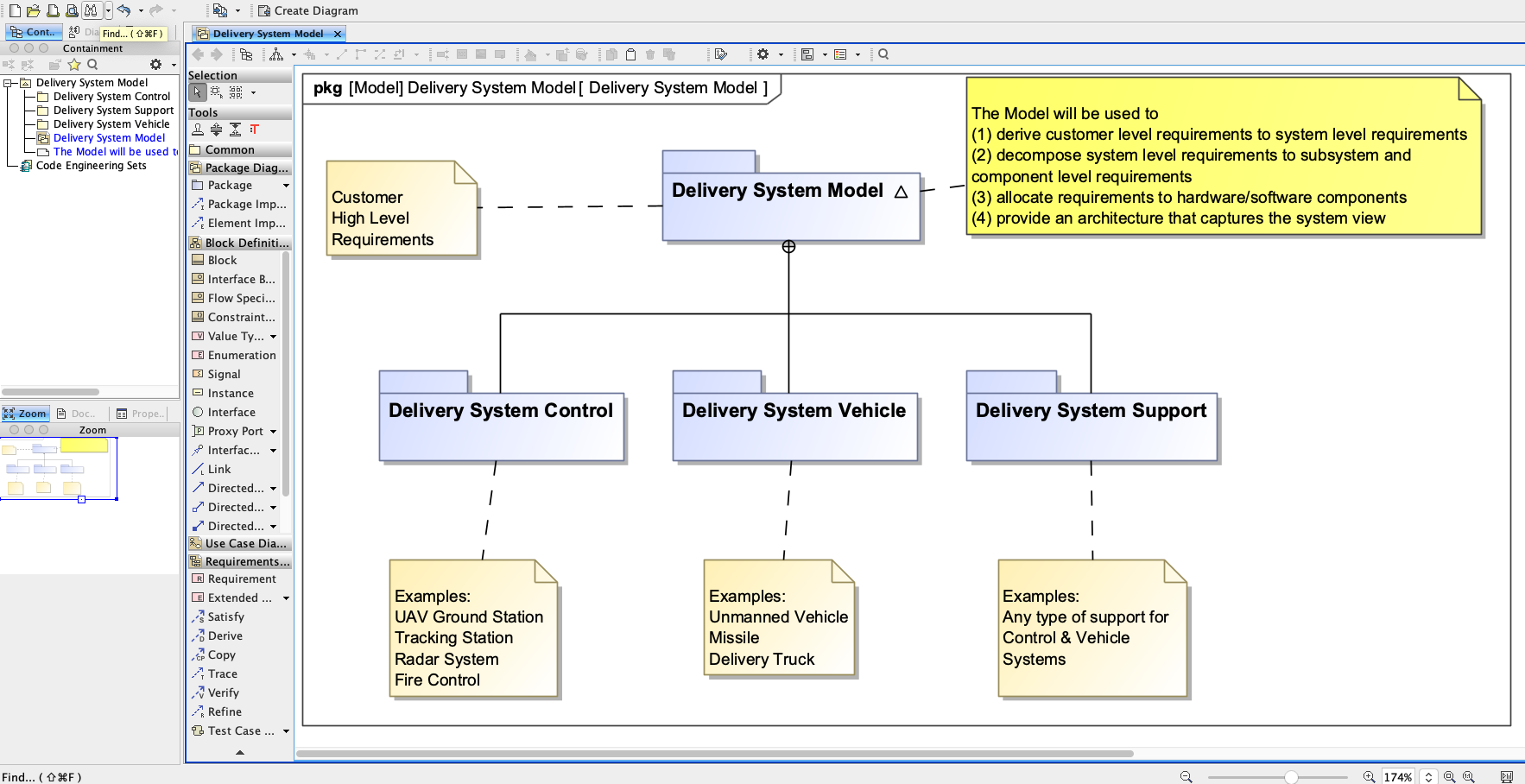Model-Based Systems Engineering
These tools have various features and/or plugins that allows for full lifecycle model-based system development:
- Support of various Technologies i.e. UAF, UPDM, DoDAF, SysML, etc.
- User Interface
- Distributed Use that allows for parallel development, i.e. Teamwork Cloud
- Configuration Management i.e. Teamwork Cloud
- Requirements Management i.e. DOORS
- Simulation Capability
- Reports, Web Publishing i.e. Velocity Engine (open-source template)
- Verification Methods
- Traceability/Gap Analysis Capability
Before starting with a model of an embedded sytem, let's assume there is a specific system or product to be developed. An assessment of some things to consider
- current system and how the system works
- new features and the user needs
Let's assume there are customer high level requirements. In fact, here is an example of a 'lite' Statement of Work" from a customer
Autonomous Delivery System
The model below is an example of an Autonomous Delivery System model
The customer has provided a Capabilities Description Document (CDD) that includes the following:
- The Delivery System shall provide the capability to be scalable, modular
- The Delivery System shall provide performance in accordance with a Performance Specification
- The Delivery System shall provide security in accordance with NIST Security Standards
- The Delivery System shall provide reliability in accordance with a Reliability Standard
- The Delivery System shall provide maintainability in accordance with a Maintainability Standard
- The Delivery System shall operate in accordance with a Environmental Standard
The task at hand now is to translate the customer requirements to system level requirements, then: derive and decompose the system level requirements to lower level subsystem, component requirements. The requirements should be allocated to hardware/software component.
The interfaces must be addressed and captured in a interface control document
Traceability of lower level requirements to higher system requirements and test verification methods also must be addressed
This "Delivery System" model can provide anything, e.g. pizza, missiles, packages, surveilance images. In our example there are (3) Systems that comprise of the Autonomous Delivery System
- Delivery Vehicle System
- Performs the delivery of products
- Delivery Vehicle Control System
- Provides the Vehicle Controls & Operations
- Tracks the Vehicle Status
- Delivery Support System
- Provides Delivery Support
- Maintains Delivery System Configuration
Ex. Autonomous Delivery System Model

Autonomous Delivery System Model
Within each of the packages in the diagram, there can be sub packages that contain the requirements, logical and physical architectures as well as data information. Other artifacts can be use cases, activity diagrams, sequence diagrams, parametric diagrams as well as relationships, such as satify, verify, and allocation.
Ex. Autonomous Delivery System Use Case Diagram

Summary
From these model artifacts, specifications can be created, test plans created, verification methods can be determined. A project like this encompasses a number of stakeholders, software, hardware, safety, cybersecurity, environmental engineers, project managers, etc.
